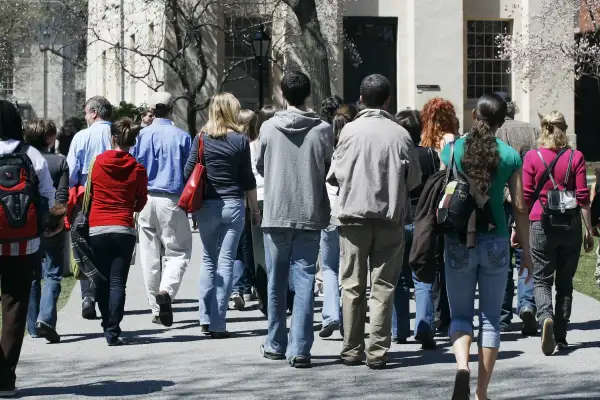Should Low-Income Students Get More Preference in College Admissions?

Just like legacy admits or athletic recruits, students from low-income families ought to get special preference in college admissions decisions, a report published Monday argues.
Students from families in the bottom socioeconomic quartile make up just 3% of the student body at the nation’s most selective colleges, according to the report from the Jack Kent Cooke Foundation. Their peers in the top income quartile, on the other hand, account for 72% of the student body at about 100 colleges that admit less than a third of applicants.
That means students who have the same academic potential but less family wealth end up attending colleges with fewer resources, lower graduation rates, lower-paying job prospects, and less access to competitive leadership roles in the government or large corporations, the report says.
“It’s a story of demography determining destiny,” Harold O. Levy, executive director of the Virginia-based foundation, told reporters Monday.
The problem is two-fold: Students from low-income families are less likely than their wealthier peers to apply to elite schools, and when they do, low-income students are systematically disadvantaged due to common admissions practices.
Low-income students and their parents tend to have less knowledge of the financial aid system, so they’re often turned off by private college sticker prices, even though those colleges can be more affordable to low-income students. Eight in 10 high-achieving students with family incomes below $20,000 don’t apply for a fee waiver from the Common App, despite clearly qualifying for the benefit.
Low-income students also are more likely to attend under-resourced high schools, where college admissions advice from guidance counselors is limited and often misguided.
After they've applied, low-income student are hindered when colleges, in an attempt to quickly weed down the applicant pool, use an academic cutoff based on SAT or ACT scores, grade point average, and the strength of courses on their high school transcript. Poorer students have less access to accelerated classes, such as Advanced Placement, that stand out on college applications, and they can’t afford to take college admissions exams multiple times in an attempt to improve their score.
Because of financial constraints, low-income students are less likely to apply early decision or visit many college campuses, both of which can boost an applicant's chance of acceptance.
If that wasn’t enough, the report says, common admissions preferences currently benefit wealthy students more than low-income ones. Athletic recruiting at elite colleges, for example, focuses on crew, water polo, lacrosse, and other expensive sports that one wouldn’t find in Harlem, Washington Heights, or Watts, Levy said, listing high-poverty neighborhoods in New York and Los Angeles.

Eighty percent of the most selective colleges also have a legacy preference for applicants whose parents or other relatives are alumni, which generally benefits wealthy, white students. Even preferences meant to increase racial diversity don’t usually lead to economic diversity: 86% of black students at competitive colleges come from the middle or upper class, according to the report.
While the report doesn’t recommend a specific model for a low-income admissions preference, it does call for giving more weight to socioeconomic factors such as neighborhood poverty levels, language spoken at home, single-parent households, parental education levels, and the average SAT/ACT at an applicant’s high school.
“If we want a nation where at least some of our leaders know first-hand what it is like to grow up poor, then the doors of selective institutions must be open to students from all communities,” the report says.
The report is especially timely, given the Supreme Court’s current consideration of the legality of race-conscious admissions policies. Many proponents of class-based affirmative action would like to see it supplement—if not replace—race-based policies. And if the Supreme Court rules against race-conscious admissions this year, colleges may not have a choice.
Levy stressed that his foundation isn’t arguing for admissions standards to be lowered, but rather for more active recognition of high-achieving low-income students' abilities given their opportunities.
In fact, roughly 30,000 students who score in the top 10% on the SAT or ACT come from low-income families, which means that highly selective colleges could increase the proportion of low-income students on campus by 30% without lowering test score standards.
“Somebody who comes from a background of poverty and nonetheless is performing at the highest levels is someone who is beating the odds," Levy said. "And they should be recognized for it."

